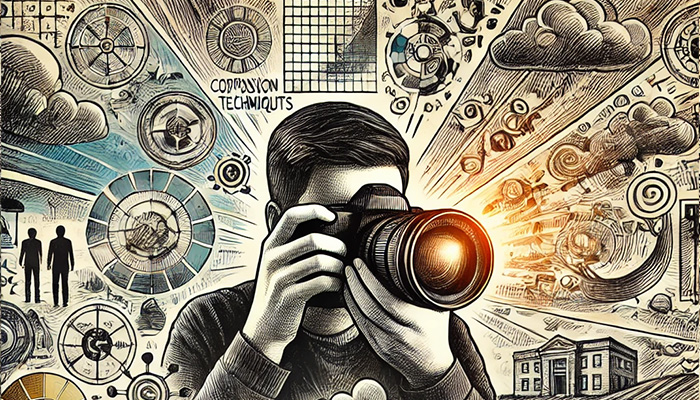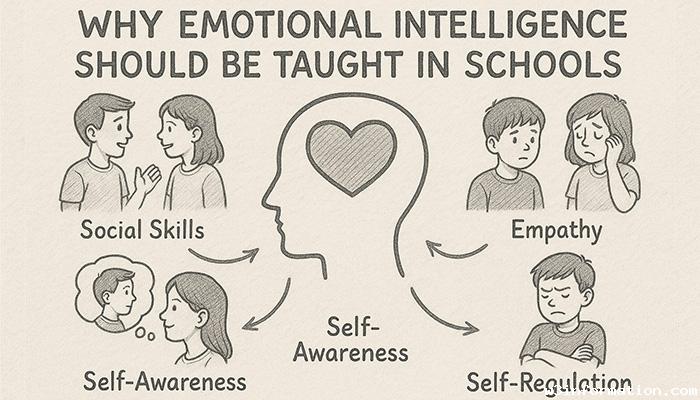The Secret to Mastering Photography
Photography functions as an artistic medium enabling us to encapsulate moments and emotions along with the surrounding world within a single image. Capturing remarkable photos appears to require elusive talent but actually mastering photography depends on learning basic principles and practicing them repeatedly. Whether you’re a beginner with a new camera or an experienced photographer looking to improve, the secret to mastering photography lies in three key elements: Mastering photography requires photographers to become familiar with their equipment while mastering technical skills and cultivating their creative vision. The blog will examine these essential components so you can enhance your photography skills.
Understanding Your Equipment
Understanding the equipment you are using is necessary before you can capture stunning photos. Your choice of image capturing device—be it a DSLR, a mirrorless camera, or a smartphone—provides specific features that enable you to capture the best possible shot.
a. Know Your Camera Settings
Begin by learning about the settings on your camera. Mastering aperture, shutter speed and ISO settings gives you complete control over your picture's exposure levels. By experimenting with manual mode on your camera you will learn how various settings influence your photos without having to memorize all settings at once.
The depth of field which determines the sharpness level across your photo area is controlled by aperture settings. Selecting a lower f-number such as f/2.8 results in a shallow depth of field with a blurry background whereas choosing a higher f-number like f/16 will render more of the scene into focus.
Shutter speed controls how motion is captured. Using a fast shutter speed such as 1/1000 sec stops motion while slower shutter speeds such as 1/30 sec produce movement effects.
ISO determines how sensitive your camera sensor responds to light. You should use a low ISO setting like 100 in bright environments but switch to a high ISO setting like 3200 when shooting in dim lighting conditions despite the risk of adding noise to your pictures.
b. Learn to Use Your Lens
The lens choice directly impacts which kind of photo you can shoot. 50mm prime lenses produce stunning portraits thanks to their sharp imaging and exceptional background blur effect known as bokeh. Zoom lenses deliver added flexibility which makes them suitable for photographing diverse subjects. Your ability to select the correct lens for your scenario improves when you learn about the impact of your lens on your shots and try using different focal lengths.
Mastering the Technical Aspects
Technical skills and creative expression are equally important elements of photography. Proper technical execution enhances photo quality no matter what you photograph.
a. Exposure Triangle: Balancing Aperture, Shutter Speed, and ISO
Understanding exposure in photography depends on mastering the exposure triangle. Your photo's brightness level depends on the combined effect of these three settings. The proper exposure requires the precise combination of these settings.
Achieving a shallow depth of field with background blur requires opening your aperture to a lower f-number and balancing exposure by adjusting shutter speed or ISO.
For capturing fast action use a quick shutter speed like 1/1000 sec and modify aperture or ISO settings to achieve proper exposure.
When shooting in low-light situations you should consider raising your ISO but remember high ISO values can introduce noise (grain) into your images.
Through experimentation with various combinations of camera settings you will develop both confidence and control in managing your camera’s exposure.

b. Focus: Getting Sharp Images
Photography requires sharp focus to achieve quality results particularly in portrait photography as well as landscape and macro photography. Autofocus works well most of the time but manual focus becomes necessary for better control in certain situations. Direct your focus toward the subject's key elements like the eyes in portrait photography or select focus points that improve the composition.
By choosing a smaller aperture like f/8 or f/11 for landscape photography you can achieve a greater depth of field which keeps the majority of the scene clearly focused.
c. White Balance: Accurate Color Representation
The white balance setting controls the color accuracy of your photos to appear natural under any lighting situation. When your photos appear excessively blue, yellow or orange it indicates that your white balance needs adjustment. Cameras feature preset white balance options for common lighting conditions including daylight and fluorescent while manual adjustment allows for enhanced accuracy.
Developing Your Creative Eye
Although technical skills are necessary, developing your artistic perspective will elevate your photography to new heights. These tips will guide you in producing more visually appealing photographs.
a. Composition: The Rule of Thirds
In photography composition stands out as a fundamental element. The rule of thirds acts as an easy-to-follow guideline which splits the frame into nine equal sections using two horizontal lines and two vertical lines. The placement of your subject on these lines or their intersections results in more dynamic and balanced photographic compositions.
The rule of thirds serves only as a guideline because successful photographers often deviate from it to develop distinctive photographic compositions. Test various compositional techniques to determine which one suits your subject best.
b. Leading Lines and Framing
Utilize elements from nature or human creations to establish lines that direct the viewer’s gaze toward the focal point. The visual pathways created by roads, rivers, fences and shadows lead viewers into the composition of an image. You can enhance your photographs with depth and context by framing your subject through windows, doors or archways.
c. Lighting: The Key to Mood and Emotion
The quality of lighting carries significant importance when it comes to photography. The golden hour which occurs shortly after sunrise or before sunset delivers natural light that produces soft warm tones ideal for both portrait and landscape photography. Architectural photography benefits from harsh midday light which creates dramatic shadows and contrast.
When taking pictures indoors use window light as your primary source and try different artificial lighting setups like softboxes or ring lights. The mood of your photograph can shift dramatically based on lighting so you must observe how various light sources influence your composition.
d. Experiment with Perspectives and Angles
Transforming an ordinary subject into something extraordinary happens when you change your perspective or angle. Avoid shooting exclusively from eye level by experimenting with ground-level shots or overhead angles and incorporating reflections to make your compositions stand out. By trying out various viewpoints you will find new perspectives that will make your photos more creative.
Post-Processing: Enhancing Your Images
Capturing outstanding photos with your camera forms the foundation but post-processing enables you to refine your images until they match your artistic vision. Adobe Lightroom and Photoshop software enables users to modify exposure levels as well as contrast and sharpness settings along with color balance adjustments.
By editing contrast and brightness you create depth in your images and adjusting clarity and sharpness ensures that details stand out.
By cropping your photos you can refine your composition while eliminating distracting elements.
Through color grading you can produce distinct visual styles ranging from a warm vintage appearance to a cool dramatic ambiance.
The objective of post-processing should be to improve the image while preserving the narrative you want to convey. To preserve the true essence of your photo avoid heavy editing and instead apply gentle modifications that enhance its natural appeal.
Practice, Experiment, and Learn
Photography demands ongoing learning and practice similar to any other art form. By experimenting with various settings as well as different lighting and composition techniques you can learn to produce stunning images. Making mistakes in photography shouldn't be feared because they serve as valuable learning moments to help you improve. Engage with photography communities and learn from tutorials while studying other photographers' work to find inspiration.
To master photography you need to cultivate your own style while developing your creative vision along with technical skills to express that vision.
Conclusion
True mastery in photography comes from understanding your equipment’s technical aspects while developing your creative vision and investing in ongoing practice. Through patience and experimentation combined with a commitment to learning you will discover your full potential as a photographer to produce images that capture moments which tell lasting stories. Never stop taking pictures and discovering new possibilities while your photography adventure continues to develop.
 Why Emotional Intelligence Should Be Taught in Schools
Why Emotional Intelligence Should Be Taught in Schools
 The Future of Higher Education: Trends to Watch
The Future of Higher Education: Trends to Watch
 How to Create an Effective Learning Environment at Home
How to Create an Effective Learning Environment at Home
 Top 10 Study Tips for Students
Top 10 Study Tips for Students
 How Online Learning is Changing the Education Landscape
How Online Learning is Changing the Education Landscape
 How to create backend CRM using React JS
How to create backend CRM using React JS